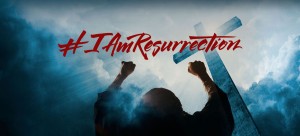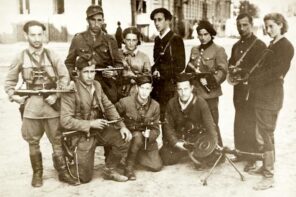Easter is the most Rocky-like story in the Christian canon. There’s blood, a sudden reversal, and finally a moment of triumph. Every time the story seems to end, some miracle prolongs the action.
Which is why, when they were looking for the perfect hashtag with which to brand their 2015 Easter festivities—something colloquial, a bit ambiguous, memorable, and aspirational—New Life Church went with #itaintover.
“I think it’s unifying,” said Tina Davis, a pastor at the multi-campus Virginia megachurch, in a brief interview with RD. “You have a common phrase, a common idea.” The church put the hashtag on their website. Pastors pushed it on social media. It appeared in New Life’s local TV commercials.
People use social media. Marketers use social media. Spreading the good news is, on some level, a form of marketing. As a simultaneous marker of identity and identity marketer, the hashtag plays a neat trick: it lets you affiliate yourself with a club, and then broadcast that clubbiness to as many people as possible. So churches use social media—even if Twitter probably is not “the most powerful way ever devised to spread the Word of our Lord,” as JesusTweeters.com posits.
Curious to see how people were using hashtags on Christianity’s highest holy day, The Cubit tracked Twitter (and, to a lesser extent, Instagram) activity, turning up plenty of clever marketing, post-church tweeting, and historical rehashing.
1) Easter tweets seem to peak after church
When do people tweet out their Easter feelings? The Cubit’s analysis suggests that the hours immediately following church are the sweet-spot for Easter hashtagging.
Across the board, popular Easter-related tweets (including #easter, #HeIsRisen, #jesus, and #jesuslives) display a sharp peak around 1:00pm CT. Supporting the hypothesis that people tend to tweet after church, the one tag that also works in many European languages—#jesus—shows a double peak, first around 7:00am CT (which is to say, midday in Europe), and then again around 1:00pm CT.
Accordingly, #Ostern (German) and #Pâques (French) both peaked around the European noon. (The data for #Pascua is more messily distributed, seemingly a weird postmodern artifact of Spain’s distinctive colonial reach).
2) “Like invitations to a hipster wedding”
Tags like #jesus arise organically. So, seemingly, do popular 2015 tags like #mygodisnotdead and #thetombisempty. But, along with billboards, TV commercials, yard signs, and slick Easter-themed webpages (“These look like invitations to a hipster wedding,” said a friend who stopped by to observe The Cubit’s research process), plenty of churches went with customized Easter hashtags, à la New Life’s #itaintover.
New Birth Missionary Baptist Church, a megachurch in the suburbs of Atlanta, pushed #IAmResurrection, with the hashtag scrawled, in enormous, blood red font across the top of church’s Easter-themed webpage:
Christian Faith Center, in Seattle, used #RememberFriday and #CelebrateSunday, while Hillsong, the Australian-turned-global megachurch musical phenomenon, ran an entire branded campaign around #crossequalslove.
Other churches used Easter as a verb (perhaps in reference to the final stanza of this Gerard Manley Hopkins poem, or simply because our culture verbs almost everything online).
“#EasterWithUs,” requested North Point Ministries, also in the Atlanta area. Gateway Church, in Texas, urged parishioners to post a selfie of themselves with someone they’d brought to church, as part of the #EasterYourSelfie campaign. At least one church actively discouraged selfies, though.
3) Hashtagging to Calvary
One advantage of hashtags: you can string a series of tweets into a kind of narrative. For example, in the days leading up to Easter, Campus Crusade for Christ tweeted Jesus’ progression to the cross, under #AtThisTime. For example, at 12:20pm on Good Friday, Campus Crusade tweeted, “#AtThisTime the Centurion sees the earthquake and says, “Surely, this man was the Son of God.” (Mark 15:39) #Easter.”
Was it live-tweeting? Well, the events weren’t exactly live. Historical tweeting? But it was at this time, not in the past, according to the hashtag. Perhaps it’s more accurate to say that Campus Crusade was summoning the eternal ritualized now—through Twitter.
All of this can seem fairly gimmicky, and certainly ephemeral. If you were to create a 0-10 scale for the intensity of religious identity markers, where something like ritual circumcision is a 10 (permanent, bodily), then using an Easter hashtag would probably have to be around 0—totally disembodied, and entirely fleeting. Still, most markers of religious identity are fairly ephemeral, which is one reason, perhaps, that they rise up again to be renewed, year after year, and tweet after tweet.
And, of course, it’s not just Christian holidays. Don’t worry—according to hashtag.org’s analytic tools, #passover is holding steady on Twitter.





